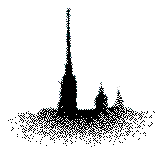


The hound of the Baskervilles – at 18, 19 and 21 centuries
“There are many tales on Baskervilles dog… Abominable creature looking like a hound but bigger than any dogs…”
This is file lifted directly from the pages of Sir Arthur Conan Doyle’s novel “The hound of the Baskerville”. Getting the information by educated man doctor Mortimer, detective Sherlock Holmes told:
- This is interest for man magic tales leaver.
But story appeared to be interest for detective too. And for biologist too.
Sherlock Holmes is the most popular person of detective stories all over the world. According to me, there are two reason of popularity of this person. The first is humanism. Holmes struggled against crimes standing on position of good. The second is realism. Sir Arthur Conan Doyle considered real facts in his stories and novels. Are there real basis of tale on Baskervilles dog? There are scientific data on strange animal living nearby Dartmoor, Exmoor and some other places in this part of England. The Beast of Exmoor – popularly conceived as a ferocious pantheresque creature stealthily prowling the rugged, secluded expanse of North Devon moorland and forest, and slaughtering the farming community’s sheep on a mass scale. Till the end of last century, this information was considered by specialists in the field of folk loure. At last, such biologist as Nigel Brierley and Trevor Beer got interest to the problem. Collecting of information began from spring 1983. This time was market by a spate of sheep killing near a farm in the Drewstone area of South Molton. Witness identities range from the strictly zoological, such an exotic escapee felids, rogue dogs, a strain of mutant feral, domestic cat which has attained abnormally large proportions, to the distinctly bizarre, such as eagles, phantom carnivores, and werewolves. The number of witnesses was some hundreds. They saw a big ànimal half dog half panthera appearing at dark nights from marshes of forests. After disappearing of it the footprints were detected. They looked like dog tracks. The efforts for to shot beast were failure. The animal was very cautious. Witnesses were able to see it only from a big distances. One time peaces of furs were found. They were identified as belonging to a big pantera. Doctor Beer got a photograph making photo of beast. It was made from a big distance and quality was bad. The image at the picture looked like leopard. Everybody knows that such an animal doesn’t live in Britain wild nature.
At the end of 80th information about deciding of enigma was published in mass-media. Hunters killed a big Bengal cat, getting from India to this wild nature by any unknown way. May be it was breaded from any private zoo. Such a little zoos are wide spread and popular in Great Britain. Some phenomena connected with Baskerville dog could be connected with such an animal, but not all. Vast collection of reputable eye-witness reports of mystery creature signed at Exmoor and Dortmoor, many ay close range and in good viewing conditions, had enable to redefine the beast status from a numerical, taxonomic and behavior standpoint. Information could provide evidence for believing that more than one such animals inhabit marshes. Although approximately 80% of the reports describe the dark panther-like cat. The remaining 20 percent of reports refer to tawny-colored puma-like form.
At begin of 90th destroyed scull was found in the marsh. It looked like leopard fragment, but identification was obscure.
“ - How do you think, Watson, where I was?
- Sat down at home?
- No. I was in Devonshire?
- Though mentally?
- Yes. My body was here, drinker 2 cattle’s of coffee, smoked many tobacco. And my spirit roved within Darthmoor marshes…”
Following Sherlock Holmes, I tried to visit this places not living Petersburg. I got a best maps from Library of Academy of sciences. I checked size of marshes and probable ecological niche of unknown animal. Then I thought taking cap of cafe and missing tobacco because I don’t smoke. At last I suggested hypothesis.
From 11 century breeding of alien animals was popular in castles of English knights. Between this animal were vide spread such dynamic and strong predators as hepards (Acinonyx jubatus). It is the most fast animal all over the world. Its maximal speed is 150 hour/km. Hepard are available for domestication. They were used in England and in Russia as catching hunter animal. There are ancient Russia fresco having image of hepards as animals in collars. Phenotype of hepards is intermediate between cats and dogs. Till begin of XX century it was considering as belonging to intermediate family. At last it was assayed as member of cats family without any doubts. Footprints of hepard look like belonging to giant dogs because of nails not able to take away like of usual cats. May be some hundreds years ago a group of less domesticated hepard escaped from private zoo and founded a little relatively stable population within marshes of central England. Some specimens from such a population, getting extremely carefully behavior survived till now? Such hypothesis is not fantastic. May be soon we will check reality of such possibility.
V.B. Sapunov, professor of Biology